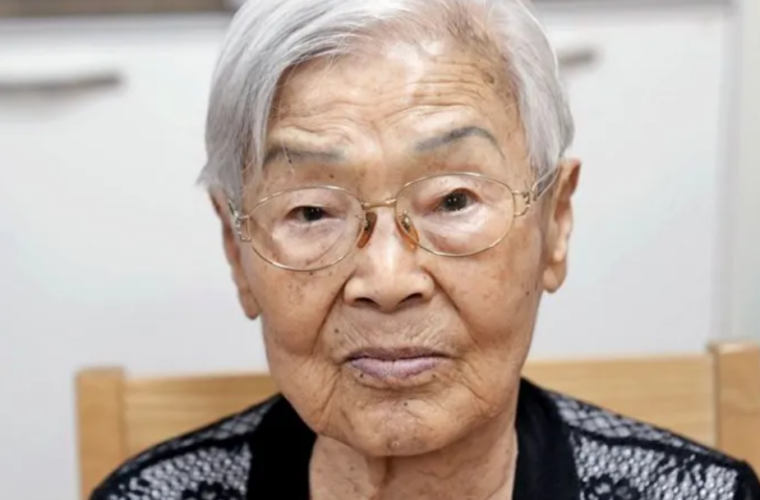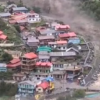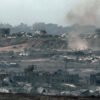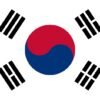BBC News : At 08:15 on August 6, 1945, as a nuclear bomb was falling like a stone through the skies over Hiroshima, Lee Jung-soon was on her way to elementary school. The now-88-year-old waves her hands as if trying to push the memory away.
“My father was about to leave for work, but he suddenly came running back and told us to evacuate immediately,” she recalls. “They say the streets were filled with the dead – but I was so shocked all I remember is crying. I just cried and cried.”
Victims’ bodies “melted away so only their eyes were visible”, Ms Lee says, as a blast equivalent to 15,000 tons of TNT enveloped a city of 420,000 people. What remained in the aftermath were corpses too mangled to be identified. “The atomic bomb… it’s such a terrifying weapon.”
It’s been 80 years since the United States detonated ‘Little Boy’, humanity’s first-ever atomic bomb, over the centre of Hiroshima, instantly killing some 70,000 people. Tens of thousands more would die in the coming months from radiation sickness, burns and dehydration.
The devastation wrought by the bombings of Hiroshima and Nagasaki – which brought a decisive end to both World War Two and Japanese imperial rule across large swaths of Asia – has been well-documented over the past eight decades. Less well-known is the fact that about 20% of the immediate victims were Koreans.
Korea had been a Japanese colony for 35 years when the bomb was dropped. An estimated 140,000 Koreans were living in Hiroshima at the time – many having moved there due to forced labour mobilisation, or to survive under colonial exploitation.
Those who survived the atom bomb, along with their descendants, continue to live in the long shadow of that day – wrestling with disfigurement, pain, and a decades-long fight for justice that remains unresolved.
“No-one takes responsibility,” says Shim Jin-tae, an 83-year-old survivor. “Not the country that dropped the bomb. Not the country that failed to protect us. America never apologised. Japan pretends not to know. Korea is no better. They just pass the blame – and we’re left alone.”
Mr Shim now lives in Hapcheon, South Korea: a small county which, having become the home of dozens of survivors like he and Ms Lee, has been dubbed “Korea’s Hiroshima”.
For Ms Lee, the shock of that day has not faded – it etched itself into her body as illness. She now lives with skin cancer, Parkinson’s disease, and angina, a condition stemming from poor blood flow to the heart, which typically manifests as chest pain.
But what weighs more heavily is that the pain didn’t stop with her. Her son Ho-chang, who supports her, was diagnosed with kidney failure and is undergoing dialysis while awaiting a transplant.
“I believe it’s due to radiation exposure, but who can prove it?” Ho-chang Lee says. “It’s hard to verify scientifically – you’d need genetic testing, which is exhausting and expensive.”
The Ministry of Health and Welfare (MOHW) told the BBC that it had gathered genetic data between 2020 and 2024 and would continue further studies until 2029. It would “consider expanding the definition of victims” to second- and- third-generation survivors only “if the results are statistically significant”, it said.
The Korean toll
Of the 140,000 Koreans in Hiroshima at the time of the bombing, many were from Hapcheon.
Surrounded by mountains with little farmland, it was a difficult place to live. Crops were seized by the Japanese occupiers, droughts ravaged the land, and thousands of people left the rural country for Japan during the war. Some were forcibly conscripted; others were lured by the promise that “you could eat three meals a day and send your kids to school.”
But in Japan, Koreans were second-class citizens – often given the hardest, dirtiest and most dangerous jobs. Mr Shim says his father worked in a munitions factory as a forced labourer, while his mother hammered nails into wooden ammunition crates.
In the aftermath of the bomb, this distribution of labour translated into dangerous and often fatal work for Koreans in Hiroshima.
“Korean workers had to clean up the dead,” Mr Shim, who is the director of the Hapcheon branch of the Korean Atomic Bomb Victims Association, tells BBC Korean. “At first they used stretchers, but there were too many bodies. Eventually, they used dustpans to gather corpses and burned them in schoolyards.
“It was mostly Koreans who did this. Most of the post-war clean-up and munitions work was done by us.”
According to a study by the Gyeonggi Welfare Foundation, some survivors were forced to clear rubble and recover bodies. While Japanese evacuees fled to relatives, Koreans without local ties remained in the city, exposed to the radioactive fallout – and with limited access to medical care.
A combination of these conditions – poor treatment, hazardous work and structural discrimination – all contributed to a disproportionately high death toll among Koreans.
According to the Korean Atomic Bomb Victims Association, the Korean fatality rate was 57.1%, compared to the overall rate of about 33.7%.
About 70,000 Koreans were exposed to the bomb. By year’s end, some 40,000 had died.
Outcasts at home
After the bombings, which led to Japan’s surrender and Korea’s subsequent liberation, about 23,000 Korean survivors returned home. But they were not welcomed. Branded as disfigured or cursed, they faced prejudice even in their homeland.
“Hapcheon already had a leper colony,” Mr Shim explains. “And because of that image, people thought the bomb survivors had skin diseases too.”
Such stigma made survivors stay silent about their plight, he adds, suggesting that “survival came before pride”.
Ms Lee says she saw this “with her own eyes”.
“People who were badly burned or extremely poor were treated terribly,” she recalls. “In our village, some people had their backs and faces so badly scarred that only their eyes were visible. They were rejected from marriage and shunned.”
With stigma came poverty, and hardship. Then came illnesses with no clear cause: skin diseases, heart conditions, kidney failure, cancer. The symptoms were everywhere – but no-one could explain them.Over time, the focus shifted to the second and third generations.





